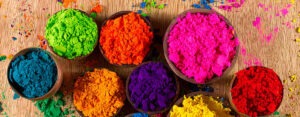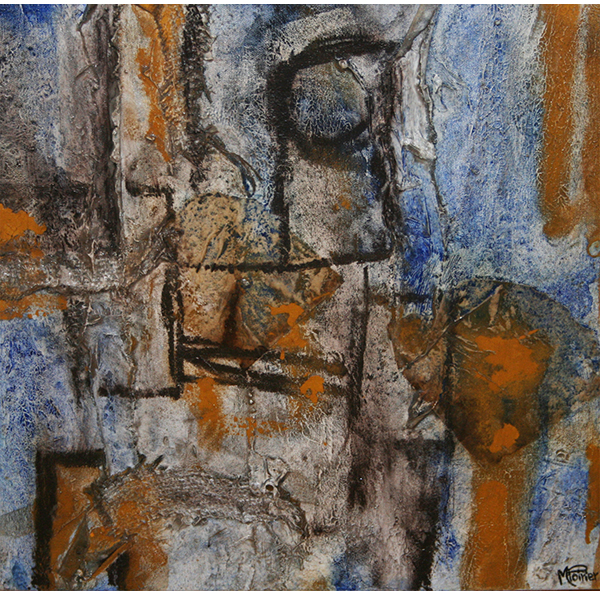This topic has been the subject of heated debate. Professionals like psychologists, sociologists, linguists or market researchers interpret the meaning of colors. They analyze phrases such as “being green with envy”, examine the most frequent colors according to different product categories, or conduct large studies on different populations.
What does the color white mean
It is the color of snow, milk, cotton or wedding dresses. White represents a new beginning, lightness, perfection, peace, innocence, etc…
White is a predominant color in hospitals, it is aseptic and conveys tranquility and calm. White shirts are used to create a good impression. It is an immaculate and impartial color. The white is neutral and clean.
A blank sheet of paper opens the door to a world of possibilities, but it can also make us feel a certain amount of anxiety if we don’t know how to use it. Phrases like “getting a blank” on an exam can be quite explicit.
What does the color yellow mean
The color yellow is linked to positive concepts such as optimism, youth, confidence and creativity. We often draw smiling faces in yellow and it is very unlikely that we will dress in yellow on a day when we are sad. It is the color of the sun, gold or of such friendly animals as giraffes or chicks.
However, yellow is a contradictory color. It is related to betrayal, greed, lies, madness or warning. Socially rejected groups of people are also linked to yellow, such as Jews, prostitutes and lonely mothers. It should be noted that in China it is the most appreciated color and has almost no negative meaning there.
What does the color orange mean
The orange color immediately catches the eye. This color is found in many fruits and vegetables as well as in sunsets or in redheads. Many things we describe as red are actually orange, like fire or tiles. According to color psychology, orange represents extravagance, energy, transformation and singularity.
What does the color red mean
Red is the most passionate color, it alarms us and captures our attention immediately. According to the psychology of colors, red is linked to love, blood, joy, suspense, beliefs, war or the forbidden. It keeps popping up on traffic signs, discounted prices or in food. It is the color of urgency.
It is impossible for it to go unnoticed, we cannot avoid noticing a lipstick or corrections on an exam. If you want to send a foolproof message or have someone notice you, use red. Dressing in red attracts attention and has an effect on sexual attraction in both humans and animals.
What does the color pink mean
According to color psychology, pink represents softness, femininity, delicacy, enchantment, sensitivity, courtesy, illusion, eroticism, etc… It can be infantile and be linked to childhood and innocence. But it also has more subtle shades of tone and can be related to nudity (in our culture).
The color pink is adored by many people who buy everything they can of this color and is hated by others who find it irritating, sexist or naive. The most criticized pink is fuchsia, because it is associated with cheap products and kitsch.
What does the color purple mean
Purple is an unusual and enigmatic color. According to color psychology, purple is linked to the world of luxury, religion and sexuality. Purple objects have an ambivalent and attractive aura. This is not a common color in nature and is easily noticed if used correctly.
Purple has been linked to homosexuality and adopted by feminism. It reflects nostalgia, fantasy, banality, ambition, vanity, fickleness, etc… As you can see, it is a color that has multiple ambiguous meanings and has great potential to be used creatively.
What does the color blue mean
Blue is the color that is most named as a favorite color. According to color psychology, blue symbolizes harmony, fidelity, sympathy, peace, serenity, trust, honesty, communication, etc… It is not by chance that many social networks (and many other companies) use it in their logo.
But this color does not have only advantages, because it also inspires distance and cold. It is totally inappropriate for food and makes us suspicious. Most people would not want to be faced with a plate of blue mashed potatoes. Blue is very suitable for many other uses, such as painting a room in a relaxing tone.
What does the color green mean
Green is a more natural color. It reminds us of grass, youth, hope, health, fertility, money, etc… According to color psychology, green is fresh and harmonious, it evokes moments of peace, youth and tranquility. People who are environmentally conscious call themselves “green”.
However, it is not a completely innocent color, and is associated with jealousy and poison. But in general, the majority of meanings of green are really positive.
What does the color brown mean
The color brown represents laziness, vagrancy, dirtiness, vulgarity or ugliness. It may seem bland and obsolete. Brown is one of the least appreciated colors.
However, it is the color of wood and autumn, and reminds us of solid, warm and pleasant homes. It is also found in foods such as chocolate and having a tanned skin tone is well regarded in our society today. Brown is a color that is very present around us and awakens multiple associations.
What does the gray color mean
According to color psychology, gray symbolizes mainly old age and sobriety. It can be obscure, mediocre and harmless or hide secrets like “grey literature” or “grey eminences”. On the other hand, gray also reminds us of gray matter or elegance in fashion.
What does the color black mean
Like white, there is an open debate about whether black is really a color. According to color psychology, black is very much linked with the night world, power and death. It represents negation, mystery, mourning, hatred, cruelty, etc… People associate black cats with bad luck and nobody wants to have a black day. This is the end result, a heavy and violent hammer blow.
However, black is a basic color in all wardrobes and often surrounds us with its presence. It is functional and very useful to go to a night party or to look more elegant for a certain occasion that requires sobriety.
In the book Psychology of Color: Effect and Symbolism, by Eva Heller, the meaning of colors is further explored. This book was one of the main sources for this article.
“Source: Ainhoa Arranz Aldana, CogniFit editor specializing in psychology and sociology.”



